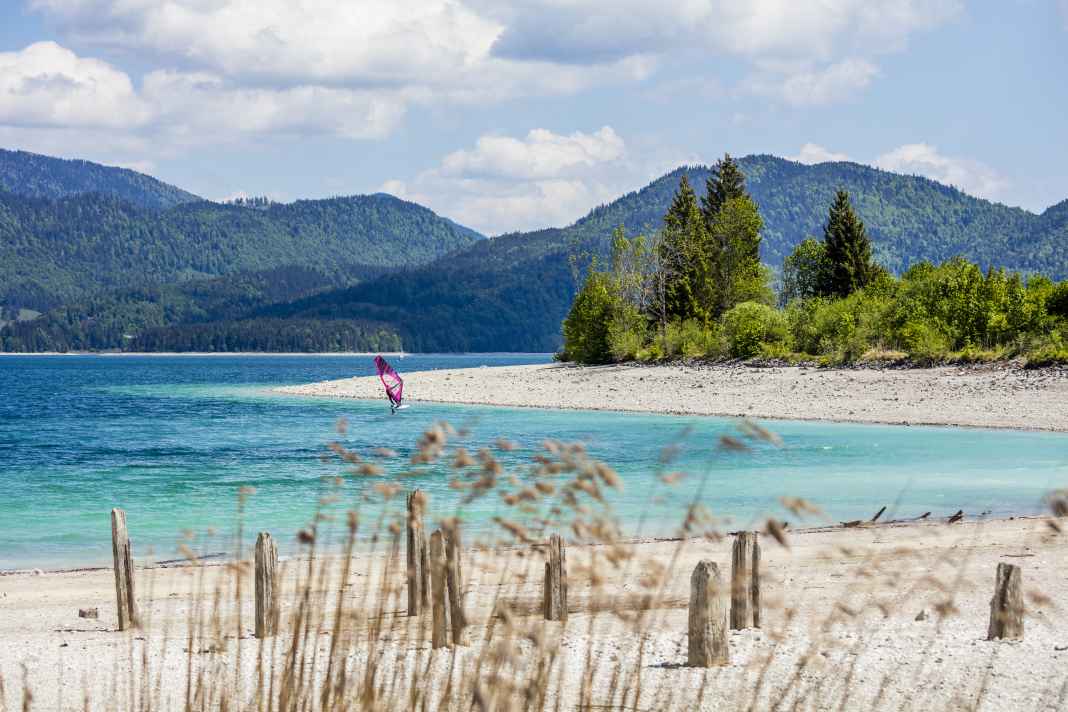





"It's been over three years since Walchensee local Andi Lachauer sent me a photo of this spot. The spot with its poles, which are only visible when the water level is low, and the Caribbean flair only works when the wind comes close to or directly into the bay. It's often a game of chance, as this constellation doesn't occur very often.
To our advantage, it hadn't rained much in the weeks before and the water level remained consistently low. The spot itself is located on the Zwergern peninsula of Lake Walchensee near the Zwergern fishery and can only be reached by bike or - in my case - by longboard.
After two unsuccessful attempts, when the wind was too far out on the Walchensee, it simply had to work on the third attempt. I was on the verge of writing the spot off completely. At around 12 o'clock, the wind finally came close enough - sometimes even into the bay. Andi came straight to the spot from the Suki surf station. However, freestyle action with a fin was out of the question as the wind was too weak. The foil had to go under the board.
Andi took advantage of the gusts and conjured up a few clean shakas and jibes - much to the delight of a few hikers, who also ran into my picture with their mobile phones out. Meanwhile, I rushed up and down the bay like a wild boar to get good photo angles. The session was over in just 20 minutes and the pictures were in the can!"
Thermal area Walchensee
Lake Walchensee is located 75 km south of Munich in the Bavarian Alps at 801 metres above sea level. With an area of 16.40 km², it is one of the largest and, at 189.5 metres deep, one of the deepest Alpine lakes in Germany. Since 1924, the originally natural lake has served as a water reservoir for the Walchensee power station at Kochelsee, 200 metres below.
On beautiful summer days, there is usually a light thermal wind at Walchensee around midday, which spreads across the lake from Urfeld and reaches around ten to 15 knots. The best conditions prevail after cold fronts with north to east winds and a large temperature difference between day and night. Southerly winds, on the other hand, usually bring little usable wind. Special wind conditions arise in autumn and spring when fog moves from the foothills of the Alps over the Kesselberg to Walchensee and cold winds of up to 30 knots sweep across the lake. Foehn winds can also occur - they come from southerly directions, are often gusty and their strength is hard to predict.
